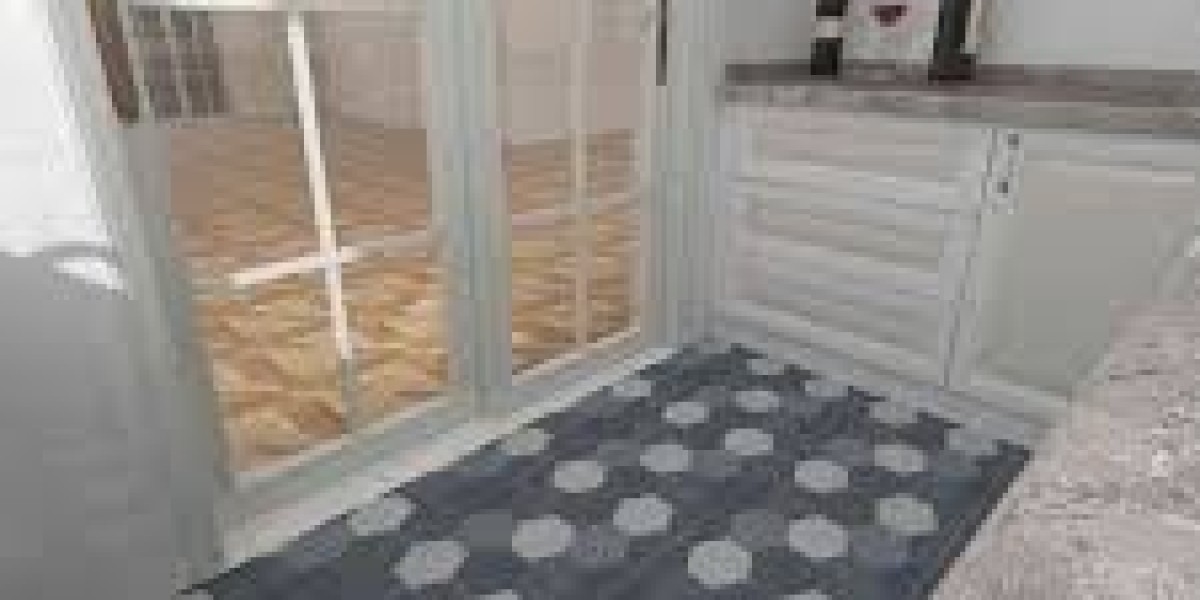The ceramic and sanitaryware industry in Asia has emerged as a global powerhouse, driven by rapid urbanization, technological advancements, and increasing demand for high-quality building materials. As the largest and most populous continent, Asia plays a pivotal role in shaping the global ceramic and sanitaryware market. This article delves into the industry's growth, key players, market trends, challenges, and future prospects across the region.
1. Introduction to the Ceramic and Sanitaryware Industry
Ceramic and sanitaryware products are essential components of modern infrastructure, encompassing tiles, tableware, sanitary fixtures (such as toilets, sinks, and bathtubs), and other construction materials. These products are valued for their durability, aesthetic appeal, and functionality. Asia, with its booming construction sector and growing middle class, has become a hub for the production and consumption of ceramic and sanitaryware products.
The industry is deeply intertwined with the region's economic development. Countries like China, India, Vietnam, and Indonesia have witnessed significant growth in residential, commercial, and industrial construction, fueling demand for ceramic tiles and sanitaryware. Additionally, the rise of smart homes and sustainable building practices has further propelled the industry's evolution.
2. Market Overview and Key Players
Asia dominates the global ceramic and sanitaryware market, both in terms of production and consumption. The region accounts for over 70% of the world's ceramic tile production, with China and India leading the way. Similarly, sanitaryware production is concentrated in Asia, with major manufacturers catering to domestic and international markets.
Key Players in the Industry
China: As the world's largest producer and exporter of ceramic tiles and sanitaryware, China boasts a well-established manufacturing ecosystem. Companies like Foshan-based Monalisa Group and Guangdong Dongpeng Holdings are industry leaders.
India: India is the second-largest producer of ceramic tiles and a major player in sanitaryware. Prominent companies include Kajaria Ceramics, HSIL Limited, and Somany Ceramics.
Vietnam: Vietnam has emerged as a significant exporter of ceramic tiles, with companies like Viglacera Corporation gaining international recognition.
Indonesia: The country's ceramic industry is growing rapidly, supported by domestic demand and export opportunities.
Japan and South Korea: These countries are known for their high-quality, technologically advanced sanitaryware products. Brands like TOTO (Japan) and LIXIL (Japan) are globally renowned.
3. Growth Drivers
Several factors contribute to the robust growth of the ceramic and sanitaryware industry in Asia:
a. Urbanization and Infrastructure Development
Rapid urbanization across Asia has led to increased construction activities, particularly in emerging economies. Governments are investing heavily in infrastructure projects, including residential complexes, commercial spaces, and public utilities, driving demand for ceramic tiles and sanitaryware.
b. Rising Disposable Incomes
The expanding middle class in countries like India, China, and Southeast Asia has led to higher spending on home improvement and luxury products. Consumers are increasingly opting for premium ceramic and sanitaryware products, boosting market growth.
c. Technological Advancements
Innovations in manufacturing processes, such as digital printing and 3D printing, have revolutionized the industry. These technologies enable the production of customized, high-quality designs, catering to diverse consumer preferences.
d. Sustainability and Green Building Practices
The growing emphasis on sustainability has prompted manufacturers to adopt eco-friendly practices. Energy-efficient production methods, recycled materials, and water-saving sanitaryware are gaining traction in the market.
e. Export Opportunities
Asian manufacturers are capitalizing on the global demand for affordable and high-quality ceramic and sanitaryware products. Countries like China, India, and Vietnam are major exporters, supplying to markets in Europe, North America, and Africa.
4. Market Trends
The ceramic and sanitaryware industry in Asia is evolving in response to changing consumer preferences and market dynamics. Some notable trends include:
a. Digitalization and Smart Sanitaryware
The integration of digital technology into sanitaryware products is a growing trend. Smart toilets with features like automatic flushing, temperature control, and health monitoring are gaining popularity, particularly in developed markets like Japan and South Korea.
b. Large-Format Tiles
Large-format ceramic tiles are increasingly being used in modern architecture and interior design. These tiles offer a seamless, elegant look and are preferred for both residential and commercial spaces.
c. Customization and Personalization
Consumers are seeking unique, personalized designs for their homes. Digital printing technology allows manufacturers to offer a wide range of patterns, colors, and textures, catering to individual tastes.
d. Focus on Hygiene and Health
The COVID-19 pandemic has heightened awareness of hygiene and sanitation. As a result, there is a growing demand for antimicrobial ceramic tiles and touchless sanitaryware products.
e. Sustainability Initiatives
Manufacturers are adopting sustainable practices, such as using renewable energy, reducing water consumption, and recycling waste materials. Eco-friendly products are becoming a key differentiator in the market.
5. Challenges Facing the Industry
Despite its growth, the ceramic and sanitaryware industry in Asia faces several challenges:
a. Raw Material Costs
Fluctuating prices of raw materials like clay, feldspar, and silica can impact production costs and profitability.
b. Environmental Regulations
Stringent environmental regulations in some countries require manufacturers to invest in cleaner technologies, which can be costly.
c. Intense Competition
The market is highly competitive, with numerous players vying for market share. This can lead to price wars and reduced profit margins.
d. Supply Chain Disruptions
The COVID-19 pandemic exposed vulnerabilities in global supply chains, affecting the availability of raw materials and finished products.
e. Skilled Labor Shortage
The industry requires skilled labor for advanced manufacturing processes. However, a shortage of trained workers in some regions poses a challenge.
6. Future Prospects
The future of the ceramic and sanitaryware industry in Asia looks promising, driven by ongoing urbanization, technological innovation, and increasing consumer demand. Key areas of growth include:
a. Expansion in Emerging Markets
Countries like India, Vietnam, and Indonesia offer significant growth potential due to their large populations and underdeveloped infrastructure.
b. Adoption of Advanced Technologies
The integration of artificial intelligence, IoT, and automation in manufacturing processes will enhance efficiency and product quality.
c. Focus on Sustainability
Sustainable practices and eco-friendly products will become increasingly important as consumers and governments prioritize environmental conservation.
d. Export Growth
Asian manufacturers are well-positioned to capitalize on global demand, particularly in regions with growing construction sectors.
e. Product Innovation
Continued innovation in design, functionality, and materials will drive consumer interest and market expansion.
7. Conclusion
The ceramic and sanitaryware industry in Asia is a dynamic and rapidly evolving sector, playing a crucial role in the region's economic development. With its strong manufacturing base, growing consumer demand, and focus on innovation, Asia is set to remain a global leader in this industry. However, addressing challenges such as raw material costs, environmental regulations, and skilled labor shortages will be essential for sustained growth. As the industry continues to adapt to changing market trends and consumer preferences, it holds immense potential for the future.
Superior Ceramic Tiles: The Pinnacle of Quality, Design, and Innovation
Ceramic tiles have been a cornerstone of architectural and interior design for centuries, valued for their durability, versatility, and aesthetic appeal. In recent years, the demand for superior ceramic tiles has surged, driven by advancements in technology, evolving consumer preferences, and the growing emphasis on sustainability. This article explores the world of superior ceramic tiles, delving into their characteristics, manufacturing processes, design trends, applications, and the factors that set them apart from conventional tiles.
1. Introduction to Superior Ceramic Tiles
Superior ceramic tiles represent the highest standard of quality in the tile industry. These tiles are engineered to meet stringent performance criteria, offering exceptional durability, resistance to wear and tear, and stunning visual appeal. They are widely used in residential, commercial, and industrial settings, making them a versatile choice for architects, designers, and homeowners alike.
What distinguishes superior ceramic tiles from standard tiles is their meticulous manufacturing process, use of premium materials, and innovative design capabilities. From large-format tiles to digitally printed masterpieces, superior ceramic tiles are redefining the possibilities of modern architecture and interior design.
2. Characteristics of Superior Ceramic Tiles
Superior ceramic tiles are defined by a range of exceptional qualities that make them stand out in the market:
a. Durability and Strength
Superior ceramic tiles are designed to withstand heavy foot traffic, impact, and harsh environmental conditions. They are highly resistant to scratches, cracks, and chips, making them ideal for high-traffic areas like kitchens, bathrooms, and commercial spaces.
b. Low Porosity
These tiles have low water absorption rates, which enhances their resistance to moisture, stains, and frost. This makes them suitable for both indoor and outdoor applications, including wet areas like swimming pools and patios.
c. Aesthetic Appeal
Superior ceramic tiles are available in a wide range of colors, patterns, and finishes. Advanced digital printing technology allows for intricate designs, including realistic replicas of natural materials like marble, wood, and stone.
d. Ease of Maintenance
Thanks to their smooth, non-porous surfaces, superior ceramic tiles are easy to clean and maintain. They resist dirt, bacteria, and mold, making them a hygienic choice for homes and commercial spaces.
e. Sustainability
Many superior ceramic tiles are manufactured using eco-friendly processes and materials. They are often made from natural clay and minerals, and their durability reduces the need for frequent replacements, contributing to sustainable building practices.
3. Manufacturing Process of Superior Ceramic Tiles
The production of superior ceramic tiles involves a combination of advanced technology, precision engineering, and quality control. The key steps in the manufacturing process include:
a. Raw Material Selection
High-quality raw materials, such as clay, feldspar, silica, and kaolin, are carefully selected to ensure the final product's strength and durability.
b. Mixing and Grinding
The raw materials are mixed with water and ground into a fine slurry. This mixture is then dried and pulverized to create a uniform powder.
c. Pressing
The powder is pressed into molds under high pressure to form tile blanks. Superior ceramic tiles often undergo double pressing to enhance their density and strength.
d. Drying and Firing
The tile blanks are dried to remove moisture and then fired in kilns at extremely high temperatures (up to 1,200°C). This process vitrifies the tiles, making them hard, durable, and resistant to water absorption.
e. Glazing and Decoration
A glaze is applied to the tiles to create a smooth, glossy, or matte finish. Advanced digital printing technology is used to add intricate designs and patterns. Some tiles undergo additional treatments, such as polishing or texturing, to enhance their appearance and functionality.
f. Quality Control
Each tile is rigorously tested for strength, durability, and aesthetic quality. Only tiles that meet the highest standards are classified as superior ceramic tiles.
4. Design Trends in Superior Ceramic Tiles
The world of superior ceramic tiles is constantly evolving, with new design trends emerging to meet the demands of modern architecture and interior design. Some of the most popular trends include:
a. Large-Format Tiles
Large-format tiles, often measuring 24x24 inches or larger, are gaining popularity for their ability to create seamless, expansive surfaces. These tiles are ideal for open-plan spaces and contemporary designs.
b. Natural Replicas
Superior ceramic tiles that mimic the look of natural materials like marble, wood, and stone are in high demand. These tiles offer the aesthetic appeal of natural materials without the associated maintenance challenges.
c. Bold Patterns and Colors
Vibrant colors, geometric patterns, and intricate designs are being used to create statement walls and floors. Digital printing technology enables endless customization options.
d. Textured Finishes
Textured tiles, such as those with a 3D effect or a rustic finish, add depth and character to spaces. These tiles are particularly popular for feature walls and outdoor applications.
e. Minimalist and Monochromatic Designs
For a sleek, modern look, many designers are opting for minimalist tiles in monochromatic color schemes. These tiles create a sense of calm and sophistication.
f. Sustainable and Eco-Friendly Tiles
Tiles made from recycled materials or produced using energy-efficient processes are becoming increasingly popular as consumers prioritize sustainability.
5. Applications of Superior Ceramic Tiles
Superior ceramic tiles are incredibly versatile and can be used in a wide range of applications:
a. Residential Spaces
Kitchens: Durable and easy to clean, superior ceramic tiles are ideal for kitchen backsplashes, countertops, and floors.
Bathrooms: Their low porosity and resistance to moisture make them perfect for bathroom walls and floors.
Living Areas: Large-format tiles and natural replicas can create a cohesive, elegant look in living rooms and dining areas.
b. Commercial Spaces
Offices: Superior ceramic tiles are used to create professional, aesthetically pleasing environments.
Retail Stores: Their durability and design versatility make them a popular choice for retail spaces.
Hotels and Restaurants: These tiles are often used in lobbies, dining areas, and outdoor spaces due to their durability and aesthetic appeal.
c. Industrial and Public Spaces
Airports and Train Stations: Superior ceramic tiles can withstand heavy foot traffic and harsh conditions.
Hospitals and Schools: Their hygienic properties and ease of maintenance make them suitable for healthcare and educational facilities.
d. Outdoor Applications
Patios and Pool Decks: Frost-resistant and slip-resistant tiles are ideal for outdoor use.
Facades: Superior superior ceramic tile tiles are increasingly being used for exterior cladding due to their durability and design flexibility.
6. Advantages of Superior Ceramic Tiles
Superior ceramic tiles offer numerous benefits that make them a preferred choice for architects, designers, and homeowners:
a. Longevity
Their durability ensures that they remain in excellent condition for decades, even in high-traffic areas.
b. Versatility
Available in a wide range of sizes, colors, and finishes, superior ceramic tiles can be used in virtually any application.
c. Hygiene
Their non-porous surfaces resist bacteria, mold, and stains, making them a hygienic option for kitchens, bathrooms, and healthcare facilities.
d. Cost-Effectiveness
While the initial cost may be higher than standard tiles, their longevity and low maintenance requirements make them a cost-effective choice in the long run.
e. Sustainability
Many superior ceramic tiles are made from natural materials and can be recycled at the end of their lifecycle, reducing their environmental impact.
7. Challenges and Considerations
Despite their many advantages, superior ceramic tiles come with certain challenges:
a. Higher Initial Cost
The advanced manufacturing processes and premium materials used in superior ceramic tiles often result in a higher price point.
b. Installation Complexity
Large-format tiles and intricate designs may require specialized installation techniques and skilled labor.
c. Weight
Superior ceramic tiles, especially large-format ones, can be heavy, requiring proper structural support.
d. Design Limitations
While digital printing offers extensive customization options, some designs may not perfectly replicate the look of natural materials.
8. Future of Superior Ceramic Tiles
The future of superior ceramic tiles is bright, with several exciting developments on the horizon:
a. Smart Tiles
The integration of technology into tiles, such as heating elements or embedded sensors, is an emerging trend.
b. Enhanced Sustainability
Manufacturers are exploring new ways to reduce the environmental impact of tile production, such as using recycled materials and renewable energy.
c. Advanced Digital Printing
Continued advancements in digital printing technology will enable even more realistic and intricate designs.
d. Customization
As consumer demand for personalized designs grows, manufacturers will offer more customization options.
9. Conclusion
Superior superior ceramic tile tiles represent the pinnacle of quality, design, and innovation in the tile industry. Their exceptional durability, aesthetic appeal, and versatility make them a preferred choice for a wide range of applications. As technology continues to advance and consumer preferences evolve, superior ceramic tiles will remain at the forefront of architectural and interior design trends. Whether used in residential, commercial, or industrial spaces, these tiles offer a perfect blend of functionality and beauty, making them a timeless investment for any project









